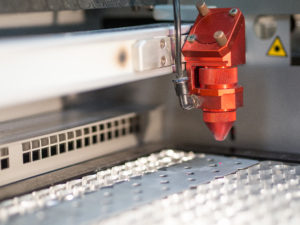Capabilities
Capabilities
NTN lab hosts an extensive range of research capabilities with regards to micro- and nanofluidic technologies. This state-of-the-art setup enables NTN’s group to develop and innovate cutting edge technologies. NTN lab’s general capabilities include engineering microfluidic devices, investigating fluid and thermo- dynamics in the microscale as well as cell culture and manipulation.

Microfluidic solutions
As one of the leaders in microfluidic research, NTN lab is equipped with a complete range of fabrication and analytical tools for microfluidic devices. In terms of device fabrication, we have the standard hot press, programmable oven, as well as UV, vacuum and oxygen plasma chambers. In addition, NTN’s group created a visual aligner to facilitate the construction of complex, multi-layered microchips.
As for microfluidic experiments, NTN lab is capable of accurately controlling microscale fluid flow using a programmable syringe pump as well as a flow and pressure controller. NTN lab is also capable of dispensing and characterising sub-microliter discrete droplets. To ensure data quality, NTN lab uses top-of-the-line ultrapure type-1 deionised water.
Imaging systems
A powerful imaging system is indispensable to any scientist, as it allows us to explore the hidden, the microscopic and the unknown. In NTN lab, researchers have access to one of the most advanced Nikon microscopes to-date which is both programmable and motorised. Coupled with a variety of fluorescent lighting options, vivid images of cell activities can be acquired. NTN lab is also capable of ultra-high speed imaging. With the Photron FastCam clocking more than 100,000 frames per second, even extremely brief processes can be analysed. We are able to capture high speed particle motion, microdroplet formation as well as droplet mixing and merging in detail.
When it comes to high sensitivity imaging, NTN lab has a modular, laser optics-grade platform at our disposal. Our optical stages sourced form ThorLabs offer micro-adjustment in six-axes, enabling us to custom-make a contact angle goniometer. This versatile setup allows researchers to acquire a 360-degree view of the sample and measure interfacial tensions with unprecedented accuracy.


Laser machining
Traditionally, microfluidic devices have been fabricated by moulding PDMS on a mask produced using soft lithography. Nevertheless, recent advances have compelled many researchers to fabricate micrometer-scale devices using laser machining methods due to its substantial time and cost savings. In NTN lab, the Rayjet CO2 laser cutter-engraver is used to create PMMA (acrylic) devices of various sizes. The powerful machine allows us to cut large workpieces, engrave three-dimensional (3D) patterns and even perform surface modifications.
To complement the subtractive laser machining capability, the NTN lab offers an additive 3D stereolithography printer. The XYZ Nobel printer can achieve sub-micrometer resolution which allows it to create smooth microchannels for cell transport which is free of obstruction.








